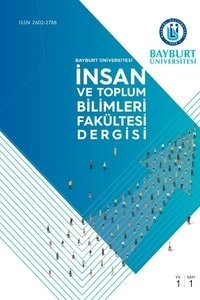Eathquake Insurance Product – Is It Need Or Necessity? ( Case Study Durrës Albanian )
Earthquake insurance is a challenge we are often facing with nowadays. This insurance can reduce the impact of this devastating natural phenomenon. Do we all need earthquake insurance? To answer this question we need to explore the willingness and ability of Albanian families to perceive the benefits this type of insurance provides to the population. No one can give a more accurate answer than we do. Many of us, especially people living in areas that do not have much tectonic cracking in their home country, choose not to receive this coverage. In the case of this natural occurrence that we often tend to call natural disasters, we must be prepared for the worst. In fact, the earthquake is a natural phenomenon. We know that risk is not simply eliminated, we try to minimize it through forms of insurance. Are we able to cover the cost of rebuilding the house in the event of an earthquake and even more to replace the household equipment? Do we know the benefits of earthquake insurance? What is the value we have to pay for this type ofe insurance? Are Albanian families able to pay for it ? This paper answers all these questions by analyzing questionnaires designed for this problem and distributed to the residents in one of the most seismic areas of Albania, Durrësarea.
Anahtar Kelimeler:
Earthquake, insurance, risk, natural phenomenon
___
- Aunon-Nerin e.t al. "Why firms purchase property insurance”, Journal of Financial Economics 2008
- Bevere, Lucia et.al: “Natural catastrophes and man-made disasters in 2017: a year of record-breaking losses” Sigma (2018)
- DincCavlak : “Preferences for Earthquake Risk-Mitigation Mechanisms: Experimental Evidence” Natural Hazards Review journal ( 2018 )
- Erdik, Mustafa “Earthquake risk assessment” Bulletin of Earthquake Engineering (2017)
- Goda, Katsuichiro et. al JamesInsurance and Reinsurance Models for Earthquake Encyclopedia of Earthquake Engineering ( 2014 )
- Maccaferri, S et.al: Natural Catastrophes : “Risk relevance and Insurance Coverage in the EU” JRC Scientific and Technical Reports ( 2012)
- Lin, Jeng Hsiang: “Earthquake insurance pricing: a risk-based approach” Journal Disasters (2018)
- Lu, Yi Xu, Jiuping: “Comparative Study on the Key Issues of Postearthquake Recovery and Reconstruction Planning: Lessons from the United States, Japan, Iran, and China” Natural Hazards Review journal ( 2015)
- McRae et.al : “Reactions to earthquake hazard: Strengthening commercial buildings and voluntary earthquake safety checks on houses in Wellington, New Zealand” International Journal of Disaster Risk Reduction ( 2018 )
- Tian, Ling Perception of earthquake risk: A study of the earthquake insurance pilot area in China - Natural Hazards ( 2014 )
- Xu, Dingde et.al “Rural households’ livelihood capital, risk perception, and willingness to purchase earthquake disaster insurance: evidence from southwestern China” International Journal of Environmental Research and Public Health (2018)
- Zhang, Chun Min Qian, Zhen Wei “Minority community willingness to pay for earthquake insurance”Disaster - Prevention and Management: An International Journal ( 2018)
- Zhu, Dongqinget.al : “When do people feel more risk? the effect of ambiguity tolerance and message source on purchasing intention of earthquake insurance” - Journal of Risk Research ,2012
- http://www.geologypage.com/
- https://www.britannica.com/
- https://amf.gov.al/
- ISSN: 2602-3938
- Başlangıç: 2018
- Yayıncı: Bayburt Üniversitesi
Sayıdaki Diğer Makaleler
Eathquake Insurance Product – Is It Need Or Necessity? ( Case Study Durrës Albanian )
Violetta NEZA, İsmail KILIÇASLAN
The EU's Contribution to Peace and Stability in the Western Balkans
Küresel Markalar - Küresel Kültür: Coca-Cola Örneği
İşletme ve Çevre Duyarlılığı Açısından Sürdürülebilirliğin Maliyet Analizine Bakış
Doğal Kaynaklara Dayalı Turizm: Ordu İli ve Jukkasjarvi Örnekleri
Fatma ŞENGÜL, Hanife AKYÜZ, Selda UCA
İlköğretim Matematik Öğretmen Adaylarının “Kültür ve “Matematik” Algılarının İncelenmesi
